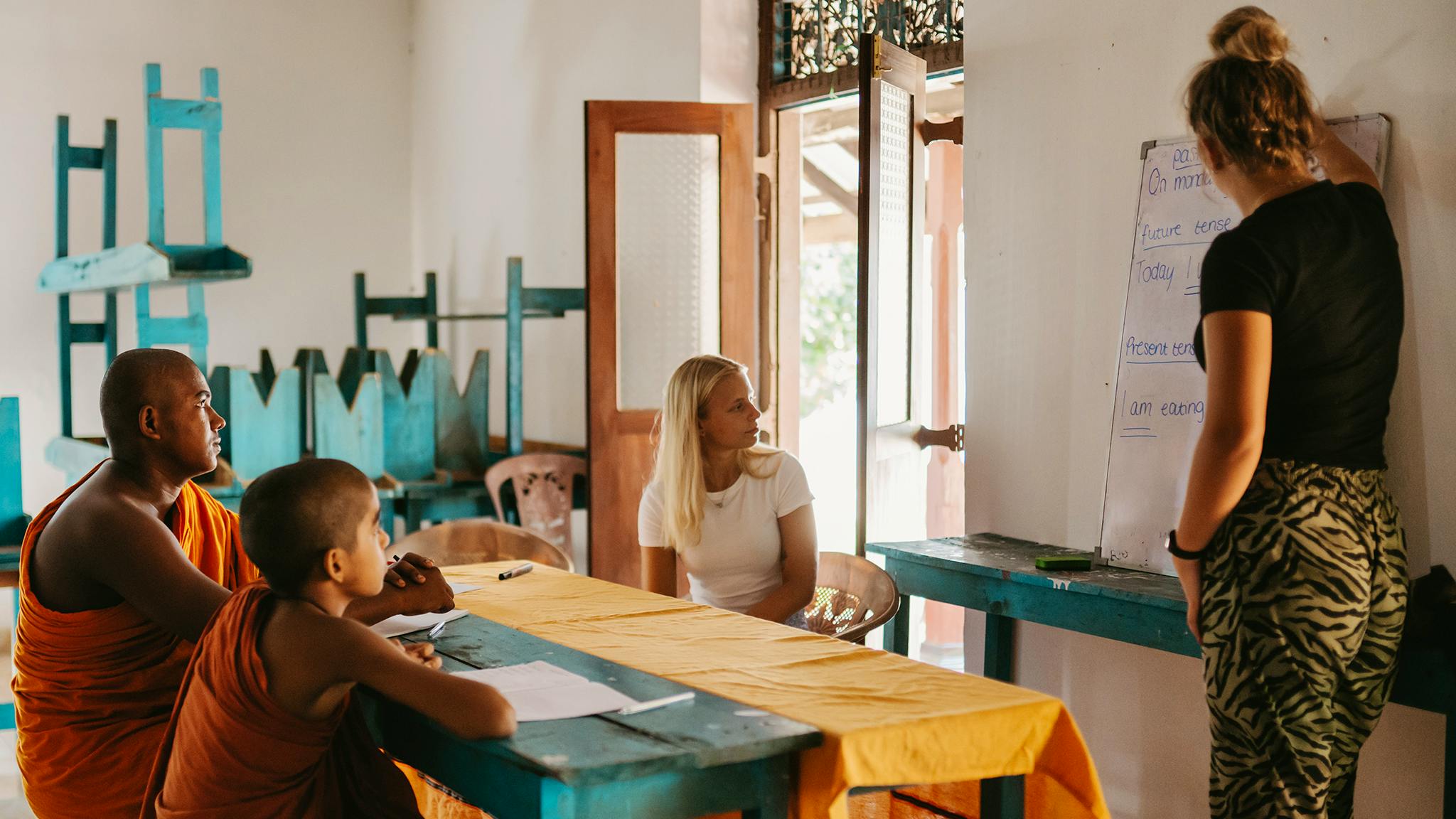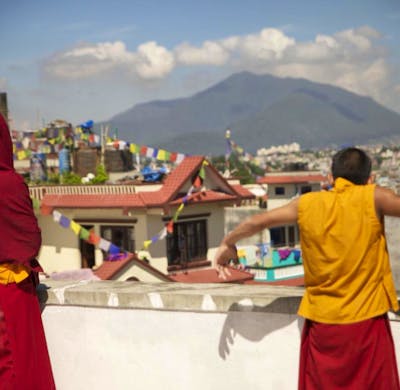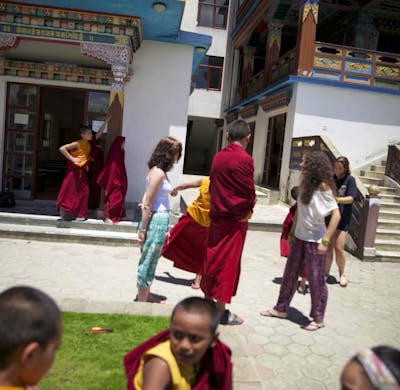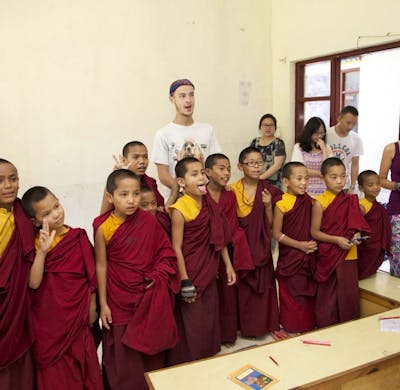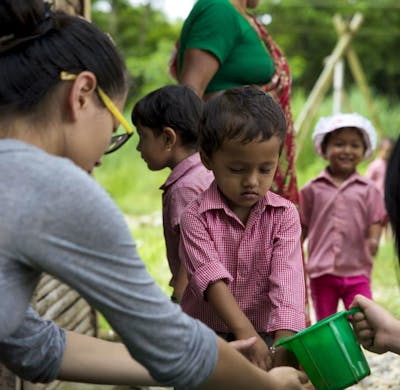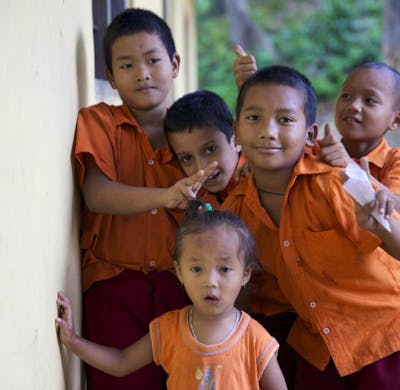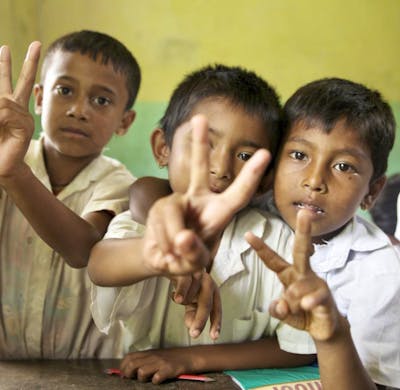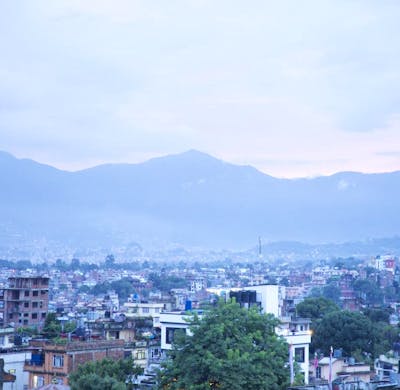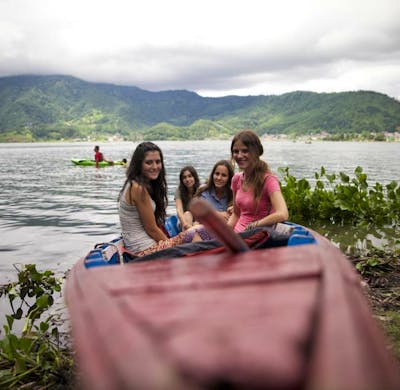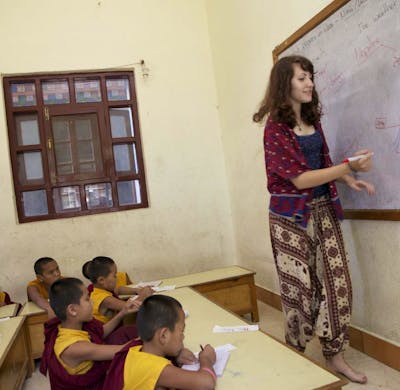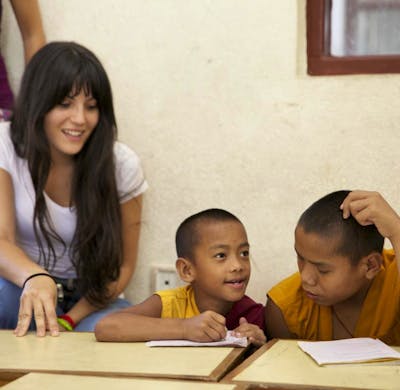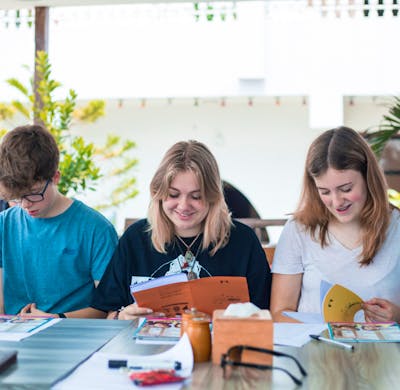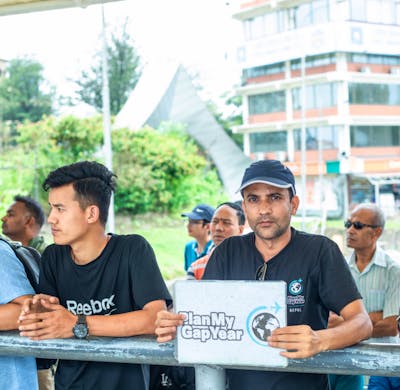Would you like to immerse yourself in a completely new culture, whilst teaching others your skills? As a volunteer teaching English to monks in Nepal, you will experience a fascinating culture. Live within a Nepalese Buddhist monastery and learn about a whole new way of life in this unique experience. You’ll be joining the monks' daily routines and practising meditation before the sun rises, ready for a day of sharing knowledge and helping these communities to learn English.
BACKGROUND TO THE TEACHING PROGRAM
Although Buddhism is not the most practised religion in Nepal, the influence of this religion can be found throughout; well Nepal is the birthplace of Buddha! From the countless temples and stupas located around the country to the thousands of Tibetan Buddhists who have sought refuge, Nepal remains an important place for Buddhists.
Many young Nepalese men spend a period of their life training as a monk. Most of the children at the monasteries are Tibetan refugees and disadvantaged children from ethnic hill tribes. Therefore, becoming a monk offers many children the chance of a better life.
Training to become a monk starts at an early age. Firstly, young monks are taught about Buddhist practices and philosophies as well as receiving general mainstream education – including learning English. Consequently, the ability to speak English allows monks to translate religious text and communicate the teachings of Buddhism to all. As the Dalai Lama said, “To learn English is to spread the word”.
It is very important that monks receive a formal education as well as religious training. It is not totally uncommon for monks to leave the monastery when they get older, therefore it is important for them to learn English to boost their career prospects in mainstream society.
As a volunteer teaching English to monks in Nepal, you can enormously benefit their learning and language development. As a result, by working with international volunteers the monks can vastly improve their communication and pronunciation skills on a new level.
TEACHING VOLUNTEER PLACEMENT EXAMPLES
If you would like to teach English to monks in Nepal you will be living at the monastery, in separate living quarters. The location of where you volunteer in Nepal will be at one of the monasteries that we support in either Kathmandu, Pokhara or Chitwan. The monasteries in Kathmandu are situated in various locations across the valley – some are close to the city centre and others are more rural outside of town.
Sundarijal Monastery - Situated in the eastern part of the Kathmandu Valley, Sundarijal Monastery is about an hour’s drive from central Kathmandu. It is home to a community of 50 monks. The monks range in age from 6 to over 20, with around half aged between 6 and 15 specifically. Volunteers at the monastery can lead educational classes for around three hours each day, engaging directly with the monks. In addition to teaching, volunteers are warmly encouraged to participate in the monastery’s daily rituals and join the monks in games, offering a rich, immersive cultural experience.
Kwung Gumba Monastery - In contrast, your volunteer work in Nepal may take place with another monastery in Kathamandu, which is located amongst a small neighbourhood. This placement is close to the shops with easy access to the main town. There are western toilets and Wi-Fi available here, although the signal is often intermittent. Volunteers teaching English to monks in Nepal will be based in one of the three classrooms that surround the library. Each room is equipped with a whiteboard and benches, and the students will be split according to ability.
Daunne Monastery - The monastery placement in Chitwan, on the other hand, is very rural and located within a jungle environment. Monkeys will be your new neighbour on this Nepal volunteer program! Consequently, international volunteers are advised to note the Chitwan monastery offers a much more authentic experience, where facilities are very basic and general resources are more limited. Another unique aspect of the monastery in Chitwan is that volunteers will work with both male and female monks. The school here is also open to children in the local village and is a short walk uphill into the forest.
Shree Urgen Choling Buddhist Monastery - Located in the scenic Pokhara region, Shree Urgen Choling Buddhist Monastery offers a unique volunteer experience in a more informal, unstructured setting. As there is no local teacher, volunteers tutor young monks early in the mornings before accompanying them to a nearby government school. During the day, volunteers have time to relax by the lakeside or assist with general tasks at the monastery. Later in the afternoons, volunteers pick up the children from the monastery and have the chance to support them with additional tutoring. Volunteers can engage with the monks in the evenings through games, singing, and dancing. This flexible, immersive role allows volunteers to experience daily life at the monastery while building close connections with the young monks.
OTHER THINGS TO CONSIDER TEACHING CHILDREN IN NEPAL
More Independent Experience - Due to the rural nature of the projects in Nepal, volunteers should be aware that this destination offers a more independent experience compared to some of our other locations. Participants are placed at various project locations around the country that often offer a basic level of accommodation. Our team are based in Kathmandu city where they support our team virtually online and via phone. Therefore, if you are looking for a highly social experience with a high level of support and daily in-person contact with our local team then we recommend considering an alternative destination. Nepal is perfect for people looking for a unique experience where they can immerse themselves in a completely different culture and are less concerned about the social aspect of the program.
Experience - For the English teaching program, teaching experience is not essential as the mere presence of a native English speaker is invaluable. As long as you are creative, determined and resourceful you can have a constructive impact on the development of the children’s education.
TEFL Course - We encourage volunteers to prepare as much as possible for their teaching program overseas. You can make the most out of your time by completing our convenient, inexpensive and international accredited 60 hour Online TEFL Course. The cost of this course is only 150 USD.
Resources - On the teach English in Nepal project, resources can be very limited. Volunteers are recommended to bring materials to the project each day to maximise their productivity and day to day involvement. It is therefore important for volunteers to prepare well in advance to get the most out of their teaching English project experience.
Project Location - When you volunteer in Nepal you may have the option to choose which location you will be placed in. This will be determined during your orientation day when you arrive at Kathmandu - a staff member will discuss the current need, availability and any preferences you might have. You may meet other volunteers in your orientation who you enjoy spending time with too!
Weekends - Your project work in Nepal runs from Monday-Friday and weekends are free. You are welcome to relax and hang out at the volunteer accommodation but most participants will use this time to travel and explore the country. As a result, you can check out our Nepal Weekend Travel Guide for top tips on how to spend your weekend.
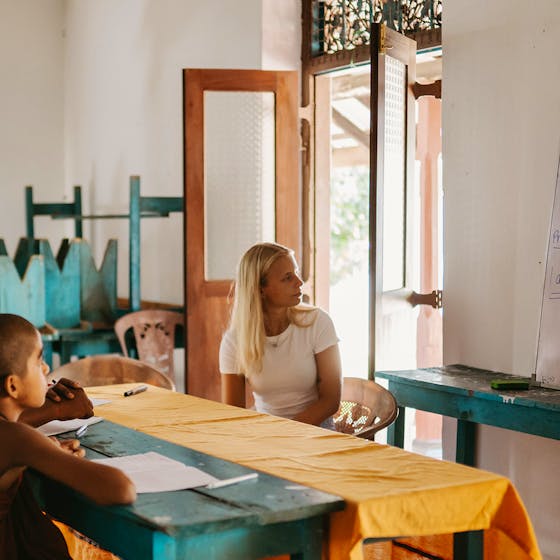
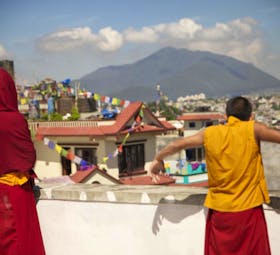
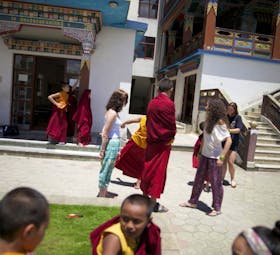
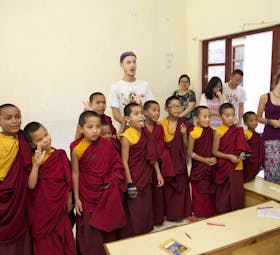

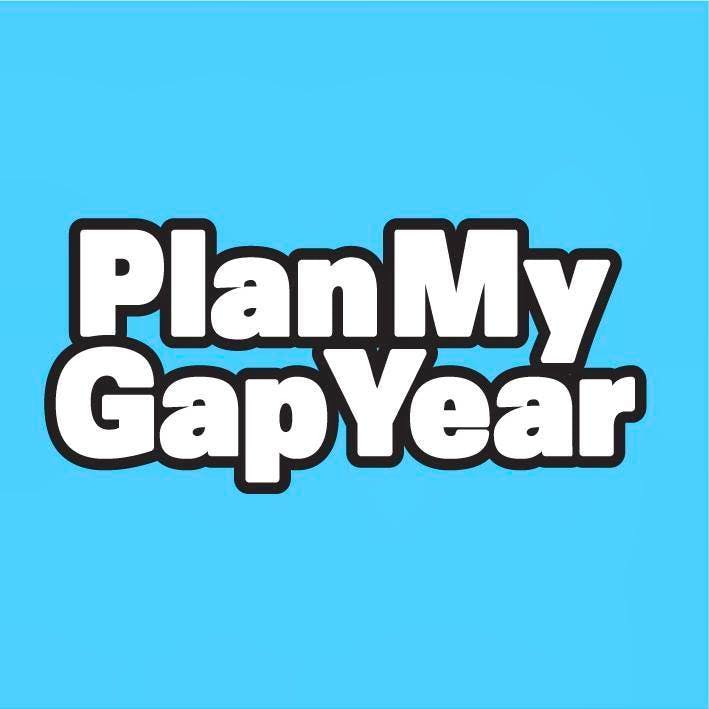
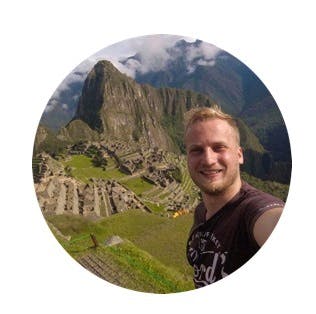
 4.9
4.9

